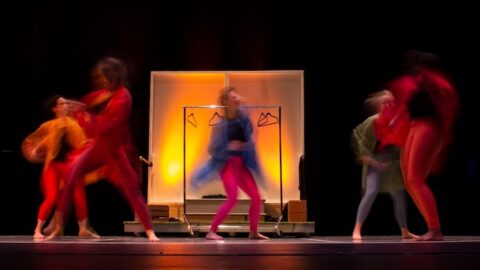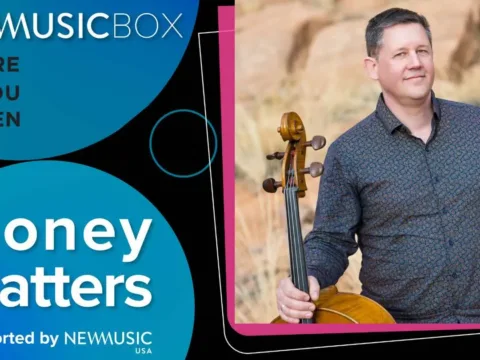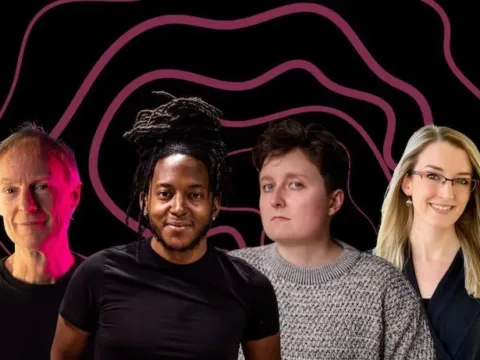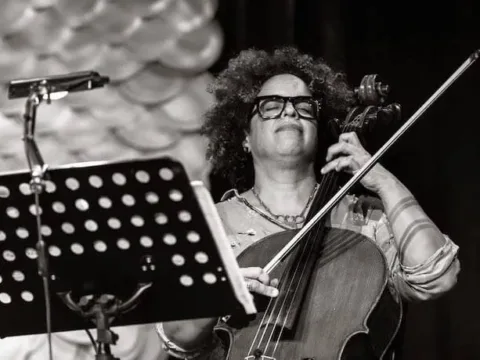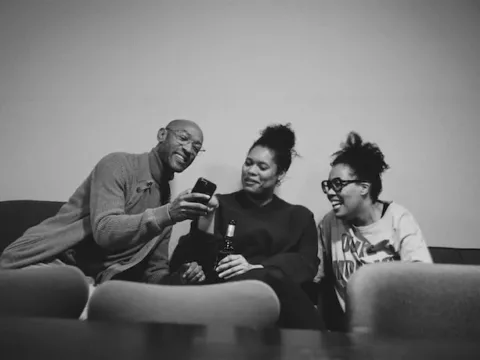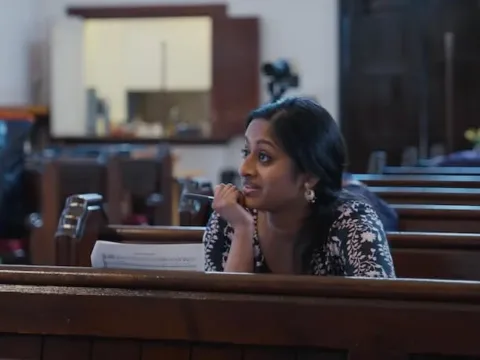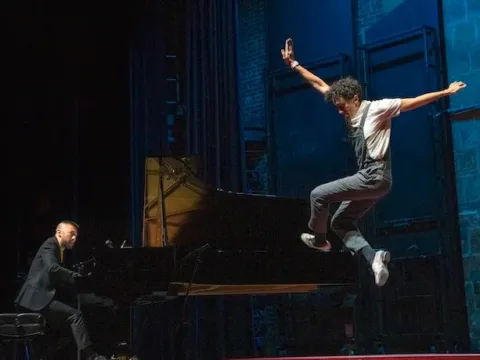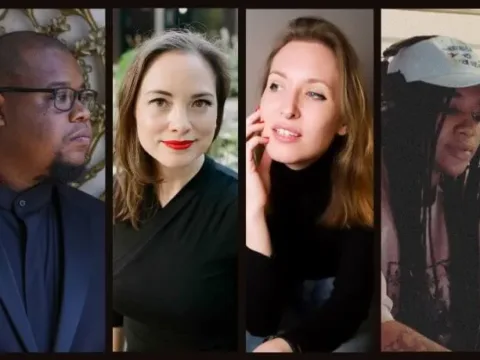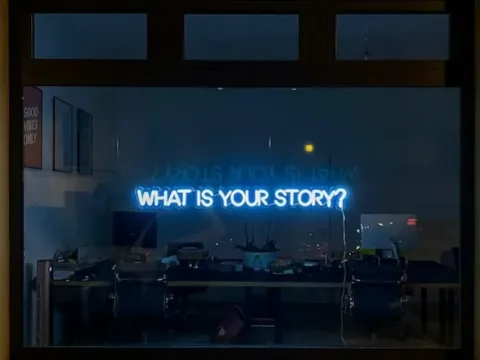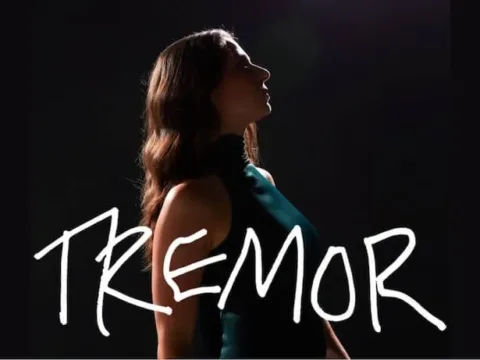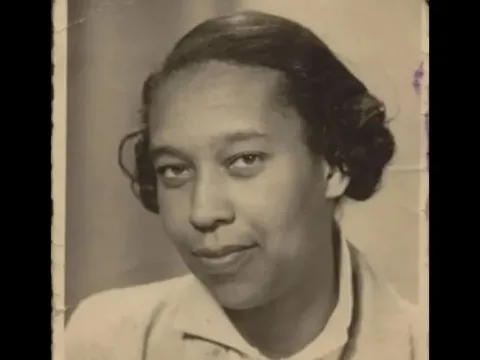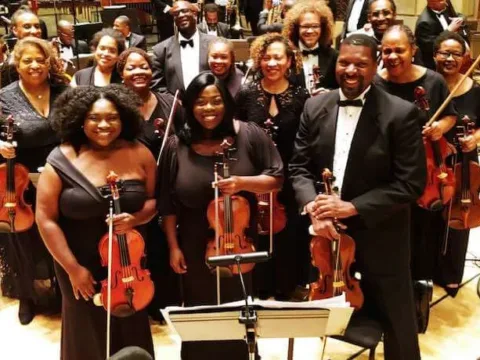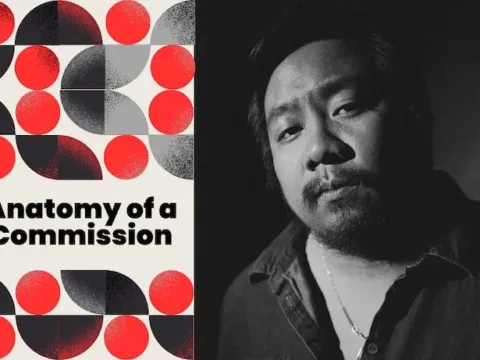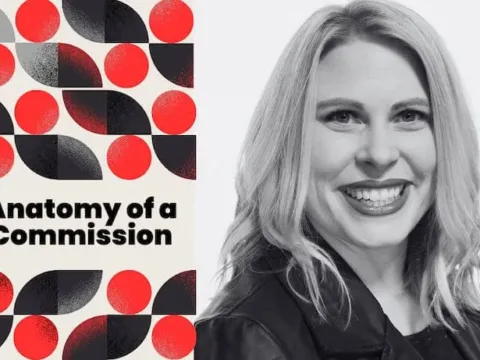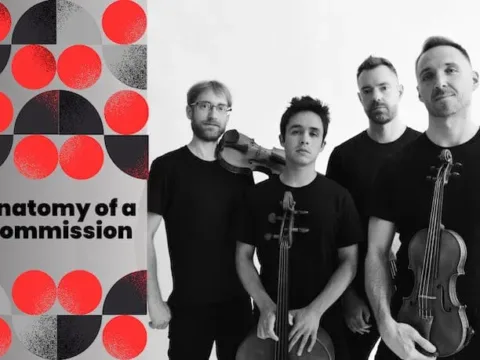There are certain experiences we all go through that, in the moment, feel novel or trivial; those times when we are coming of age and think, “does everyone have to do this?” But in some cases, the more distance we travel from those moments, the more we recognize how unique or meaningful they were. We come to realize that we have been given something important, the significance of which only starts to bloom when we are sufficiently prepared to see it.
When I was a green, young freshman at Carnegie Mellon University School of Music (back in the late 1990s), Dalcroze Eurhythmics provided me just such an experience. In the 25 years I’ve spent as a practitioner and patron of new music since, the scarcity of people I have encountered who can relate to my experience has made me realize just how special my Dalcroze training was. As I have found, the application of Dalcroze concepts in contemporary and avant-garde music warrants deep consideration; when human connection is required and music serves as the medium, Dalcroze Eurhythmics is an invaluable tool.
Eu means good, and rhythm means flow… the short definition is, we’re working for good flow. Music that has achieved a threshold of eurhythmic.”
Showing up for my first Dalcroze seminar in the fall of 1998, I was primarily overwhelmed by the pressures of trying not to look awkward. Being asked to remove my shoes and fluidly move around the room while our professor improvised at the piano was almost incomprehensible to even the most outgoing college freshman. What if I had holes in my socks? Did my feet smell bad? Was I supposed to know the moves? Were there “moves?” What can this possibly teach me?
The founder of this pedagogy, Swiss composer Èmile Jaques-Dalcroze (1865-1950), taught solfège and harmony at the Geneva Conservatory starting in the 1890s and was interested in how musicality can be examined without discussing technique or methods of execution.
“The problem was that these conservatory students were playing too robotically; there were certain instincts missing,” explained Stephen Neely, my former professor, who is now the director of the Marta Sanchez Dalcroze Training Center at Carnegie Mellon. “Students were taught to play all the right notes at the right time but never taught to ask ‘how does it feel?’ and, ‘how does it feel to you?’” Neely said that motivation for aspiring classical musicians is too often focused on the idea that you’re “supposed to be making sounds.” As he pointed out to me (and as he continues to impress on all of his students), “The role of music is to feel.”
To unlock this essential feeling, Dalcroze’s system begins with the musician setting aside their instrument. Neely said, “The body is the first instrument. There’s no music in your violin, there’s no reason to play a violin except to share. What is it you’re sharing? You’re sharing the music that’s in your first instrument: your body. Eu means good, and rhythm means flow… the short definition is, we’re working for good flow. Music that has achieved a threshold of eurhythmic.”
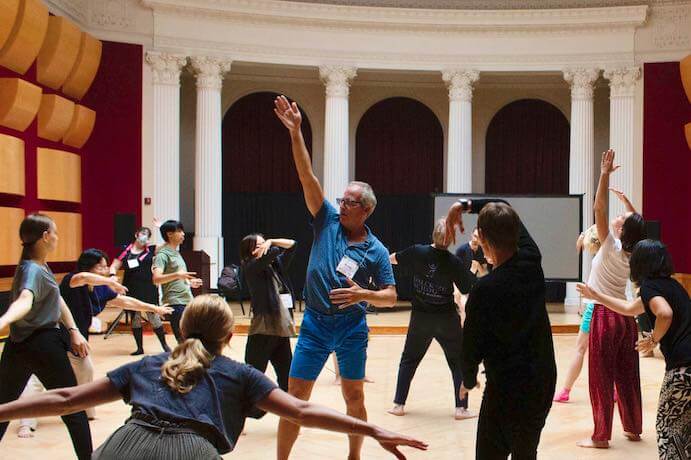
Dalcroze Eurhythmics’ primary analytical tool is a form of movement called plastique animèe, a type of performative analysis that opens students up to new levels of comfort in expressing themselves. It provides a visual representation of the musicality that Dalcroze felt could not be found on the printed page. It is an exploration of the space between the notes, and, in contrast with interpretive dance, the practitioner doesn’t move with the music, but becomes a living diagram of the music. It is a visualization of what the music feels like without the need to communicate this expression using sound. It is not unusual therefore for plastique animèe to be performed in silence, and according to the Institute for Jaques-Dalcroze Education, it is regarded as proof that “the body is a musical instrument without qualification.” Some Dalcroze practitioners have taken to calling this “bodying” the music.
Dropping the word eurhythmics in casual conversation tends to inspire at least one person in the room to start reciting Annie Lennox lyrics, and almost no one launches into a frenzy of plastique animèe. But from its very inception over 120 years ago, Dalcroze Eurhythmics found an application in decoding or demystifying contemporary music. Ballets Russes founder Sergei Diaghilev went to the Dalcroze training center at Hellerau in Dresden, Germany, in 1912. There, following the recommendation of Jaques-Dalcroze, he recruited dancer Marie Rambert to join his company and help his choreographer, Vaslav Nijinsky, interpret the complicated rhythms of Stravinsky’s Rite of Spring, which would be premiered by the Ballet Russes in Paris, the following year.
This year, Carnegie Mellon University won the bid to host the sixth International Conference of Dalcroze Studies, which prominently featured contemporary musicians in much of its programming. Following two weeks of intensive workshops, lectures, and performances, the conference culminated in a live conversation (via webstream) with Meredith Monk, and a collaborative performance between Grammy Award-winning vocal ensemble Roomful of Teeth and Pittsburgh’s resident contemporary dance company, Attack Theatre.
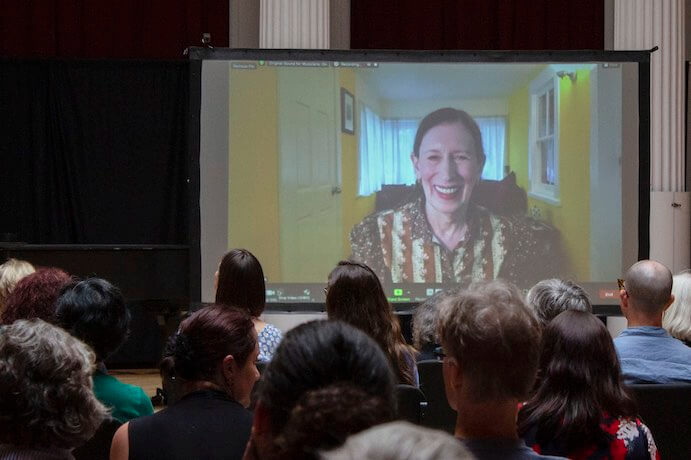
Monk’s nearly two-hour talk opened with a concise summary of the value that her experience with Dalcroze Eurhythmics has brought to her work. “I want to express my gratitude that Dalcroze was my early training,” she said. “There’s not a more integrative way of working with music, the body and living than his visionary methodology.” I was thankful that she went on to validate my own observations, saying, “I was not aware how much Dalcroze had influenced me until I started working with some classically trained singers on [my opera] Atlas for the Houston Grand Opera. I was doing a number of rhythmic phrases that went over a number of other phrases and then came back to the big one, and they said ‘how are you doing that?’ I said I don’t know, it’s completely intuitive, and they said ‘ah, it’s that Dalcroze training!’”
Monk went on to list a number of points taken from Dalcroze’s methods that she feels have directly informed her artistic voice. Above all, she cited “multi-perceptual modes,” which is the integration of internal and external factors like the senses, the intellect, the spirit, space, the environment, and of course, the body. Monk was very specific in citing the “spirit of playfulness” in her work, for which she credits Dalcroze.
In Monk’s case, the creation of multifaceted, theatrical works that combine movement and sound seems almost too obvious an extension of Dalcroze’s method. The Dalcroze community is usually quick to point out that plastique animèe is not a dance, and the movement in many of Monk’s pieces tends to feel the same way — not accompanying choreography, but part of the music.

For some, Monk’s music passes just outside the accessible and is considered unusual, avant-garde high art. The hyper-complexities of Brian Ferneyhough, the extra-musical techniques of Helmut Lachenmann, and the microtonal constructions of Harry Partch share adjacent spaces to Monk’s work, and though these voices are all considerably different, audiences might only be able to relate to music like this with their emotions rather than their intellect; how it makes them feel. As performers, using movement as a tool to explore the feeling that surrounds the production of sound can provide a visual roadmap. The Dalcroze perspective suggests that where there is human connection (a performer before an audience), there is always some feeling or emotional material the performer can unlock. No matter how intellectual the musical structures, a threshold of eurhythmic can be achieved.
At the conclusion of the conference, Roomful of Teeth appeared at Carnegie Mellon University’s Philip Chosky Theater in a program called Blurred Bodies. The performance featured a fully choreographed narrative created by Peter Kope, the artistic director of Attack Theatre, set to The Ascendant, by composer Wally Gunn and poet Maria Zajkowski. Though Roomful of Teeth has performed the piece many times around the world, they remarked from the stage that this was the first time it had been choreographed. To demonstrate the message of the conference, Attack Theatre began by performing the final scene in complete silence, which was reminiscent of plastique animèe and to the delight of the well-informed, Dalcroze-minded audience.

Inspired by the conference, I shared with Professor Neely that my training in Dalcroze under his tutelage had only recently begun to decode itself to me. “For most of us it takes a decade to have enough experience to compare it and be like, Oh wait, there was stuff there, I could have paid attention differently,” he said. “Most of us are not ready at that age to see the bigger picture… How can I tell you what to learn? All I can do is open doors for you.”
I recently spoke with Billy Holtz, a rising senior at Carnegie Mellon School of Music, who has shown an exceptional grasp and penchant for Dalcroze Eurhythmics. Holtz, a violist and aspiring conductor, said, “I think the conductor benefits are interesting, just spending that amount of time in front of people. Day one Eurhythmics is like, walk around the room and we’re all freaking out, super self-conscious freshmen who just got to college. Then, by the end of it, you’re doing a plastique animèe in silence for three minutes in front of 70 people, and it’s just kind of normal. When I first started getting on the podium to conduct, I was a lot more comfortable than I previously was. It did so much for my musicality, like learning how to phrase movement… Eurhythmics also made me more comfortable taking risks. It opens the door for a whole new world of interpretive decisions and new possibilities.”
It was comforting to hear that a quarter-century after my freshman year, these modern college students are still struggling with the same basic rites of passage. They are still doing it like we used to! Whether today’s college-level Dalcroze student is trying to perfect that Bach chaconne, audition one day for Roomful of Teeth, or is destined to be their generation’s Meredith Monk, the potential with which this training invests them will blossom profoundly as they step forward on their journey into music.
I CARE IF YOU LISTEN is an editorially-independent program of the American Composers Forum, and is made possible thanks to generous donor and institutional support. Opinions expressed are solely those of the author and may not represent the views of ICIYL or ACF.
You can support the work of ICIYL with a tax-deductible gift to ACF. For more on ACF, visit the “At ACF” section or composersforum.org.
